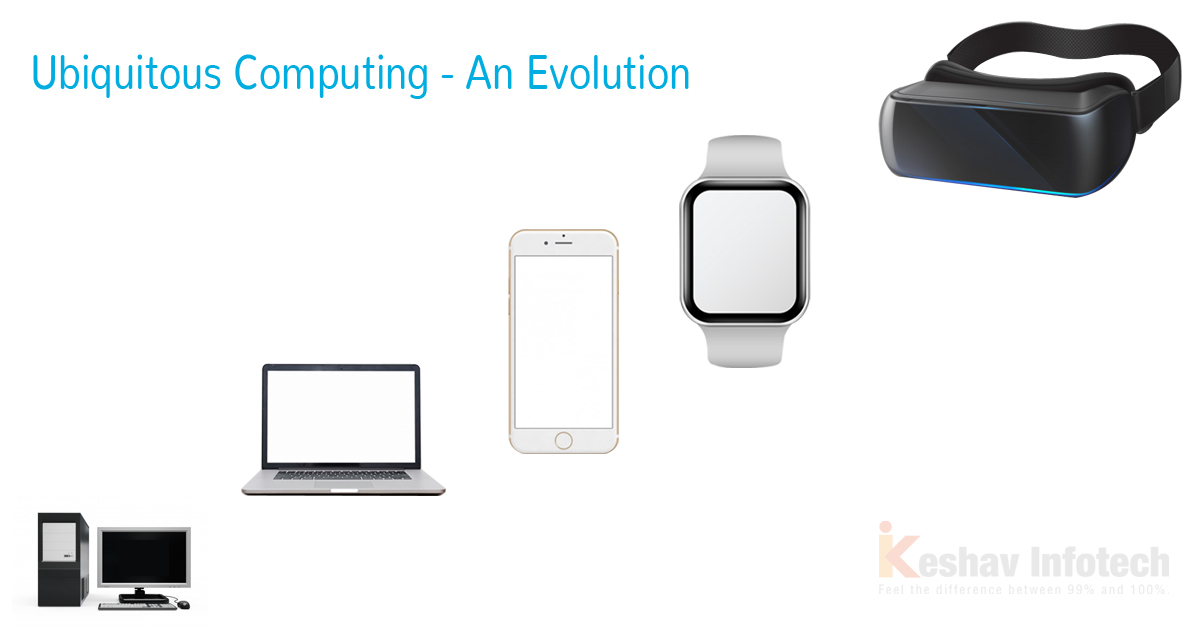An Evolution Called Ubiquitous Computing!
- Business
- October 4, 2019

Ubiquitous computing refers to computing where computer sensors connect with computing devices to provide continual and ongoing computing. The omnipresent nature of ubiquitous computing works to unify physical and digital spaces. It includes personal wearable technology such as watches that operate as smartphones, tablets, etc.
Unlike desktop computing, ubiquitous computing can occur with any device, at any time, in any place and any data format across any network. It has evolved from laptops, notebooks, and smartphones to tablets, wearable devices, sensors, lighting systems, fleet management and pipeline components, appliances and much more.
The main goal of ubiquitous computing is to make smart devices to improve the human experience and quality of life by creating a sensor network capable of collecting, processing and, communicating data. Ubiquitous computing applications can cover energy, military, safety, consumer, healthcare, production, and logistics.
A Revolution is taking place with ubiquitous computing for business. It may be an Apple Watch informing a user of a phone call or Alexa playing music without any user intervention, the change is happening and it is happening now! Here are the four major innovations with the help of ubiquitous computing:
Electronic Monitoring Systems
Real-time monitoring or Electronic Monitoring has become an integral part of organizations. Many people are adapting to electronic monitoring systems by equipping their machinery, devices, infrastructures and also their employees with a networked sensor to monitor the work environment thoroughly and in real-time. This even makes taking action in response to the data easier and faster.
Robots
Advancement has been seen in artificial intelligence and sensor technology and with this advancement, innovations, and improvements have been seen in computing. One such improvement has been in the field of robotics. The new generation of robots can learn and complete tasks on their own. This leads to robots working in complex environments and close settings with humans.
Teleconferencing
There is a unification of physical and electronic spaces taking place with the advances in communication technology. This has lead to the rise of a magnificent technology in recent years where a virtual meeting can be held and people can communicate from any part of the world. With teleconferencing, teams can work together without being in the same physical space.
Wearable Computing Devices
Wearable Computing Devices are another innovation when it comes to ubiquitous computing. Individuals engage with wearables that measure the activities that they do. They are called ‘quantified self’ products. These products are Fit Bit, Apple watch, etc. Enhancements technologies like Google Glass and Virtual Reality devices like Oculus Rift are also reforming and challenging technological boundaries. All of these three engage with others and our environment in the world of work.
Ubiquitous computing is here to stay and grow. We cannot predict the future and the impact of ubiquitous computing on us, our societies or the way our organization function but it is sure going to bring a change. The outcomes will depend on how we utilize it in our lives.

 INDIA - Headquarter
INDIA - Headquarter
Near Hotel Imperial Palace,
Yagnik Road,
Rajkot, Gujarat - 360001
Phone: +91 97 2352 3243
 USA - Office
USA - Office
Houston - TX
Phone: +1 832 377 5066
 UK - Office
UK - Office
59 Morley Crescent West,
Stanmore, Harrow,
Middlesex, HA7 2LL
Phone: +44 (0)7745084102
 AUSTRALIA - Office
AUSTRALIA - Office
5 river rose Street, Greenvale,
Victoria 3059
Phone: +61 404 798 611
 CANADA - Office
CANADA - Office
Thriftlodge, Box 936.,
Moose Jaw sk, S6H 4P6
Phone: +1 306 450 8501
Copyright 2020 © Keshav InfotechPrivacy Policy | Terms & Conditions





